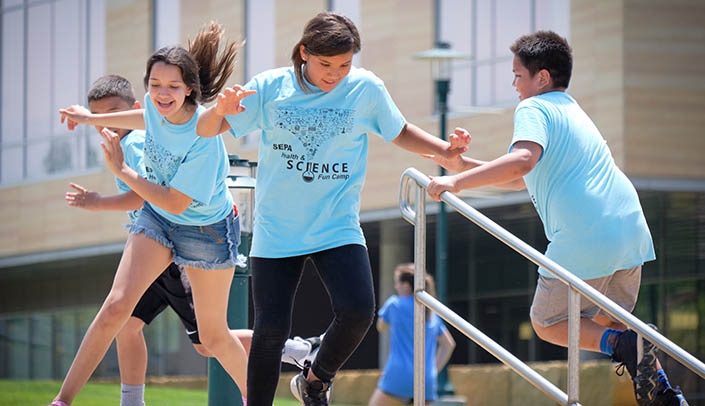Forty-two youth from six reservation communities in Nebraska and South Dakota, as well as Omaha, participated in the recent Science Education Partnership Award (SEPA) Health and Science Fun Camp hosted by UNMC June 2-5.
The camp, which is funded by a five-year, $1.3 million National Institutes of Health SEPA grant, is aimed at strengthening the math and science curriculum of American Indian youths. Maurice Godfrey, Ph.D., a professor in the Munroe-Meyer Institute at UNMC, is the principal investigator on the grant.
During the four-day camp, the students took part in numerous hands-on activities that included:
- A planetarium star show at the University of Nebraska at Omaha Planetarium;
- Learning about STEM careers at Omaha’s Henry Doorly Zoo, where they also visited the Lied Jungle;
- Touring the Center for Nursing Sciences Simulation Center at UNMC where they listened to heart and lung sounds on manikins; and
- Visited the UNMC Mind & Brain Health Labs where they tested their driving skills on simulators.
“It’s an excellent experience for our students,” said Julene Kay, a special education teacher with Santee Public Schools.
Kay has chaperoned students to the SEPA science camps for the past seven years and said the experience has made an impact on the students who participated.
“The students are much more comfortable taking part in other science-oriented activities after they have taken part in the SEPA,” Kay said.
For 11-year-old Talia Saunsoci, the camp has introduced her to new friends and new concepts in scientific research.
“I wanted to come to the camp because I want to learn more science than what I see in a book and really learn how scientists do the things they do,” Saunsoci said.
The camp was capped off with iSTEM activities that included robotics and coding through the UNO College of Engineering.
